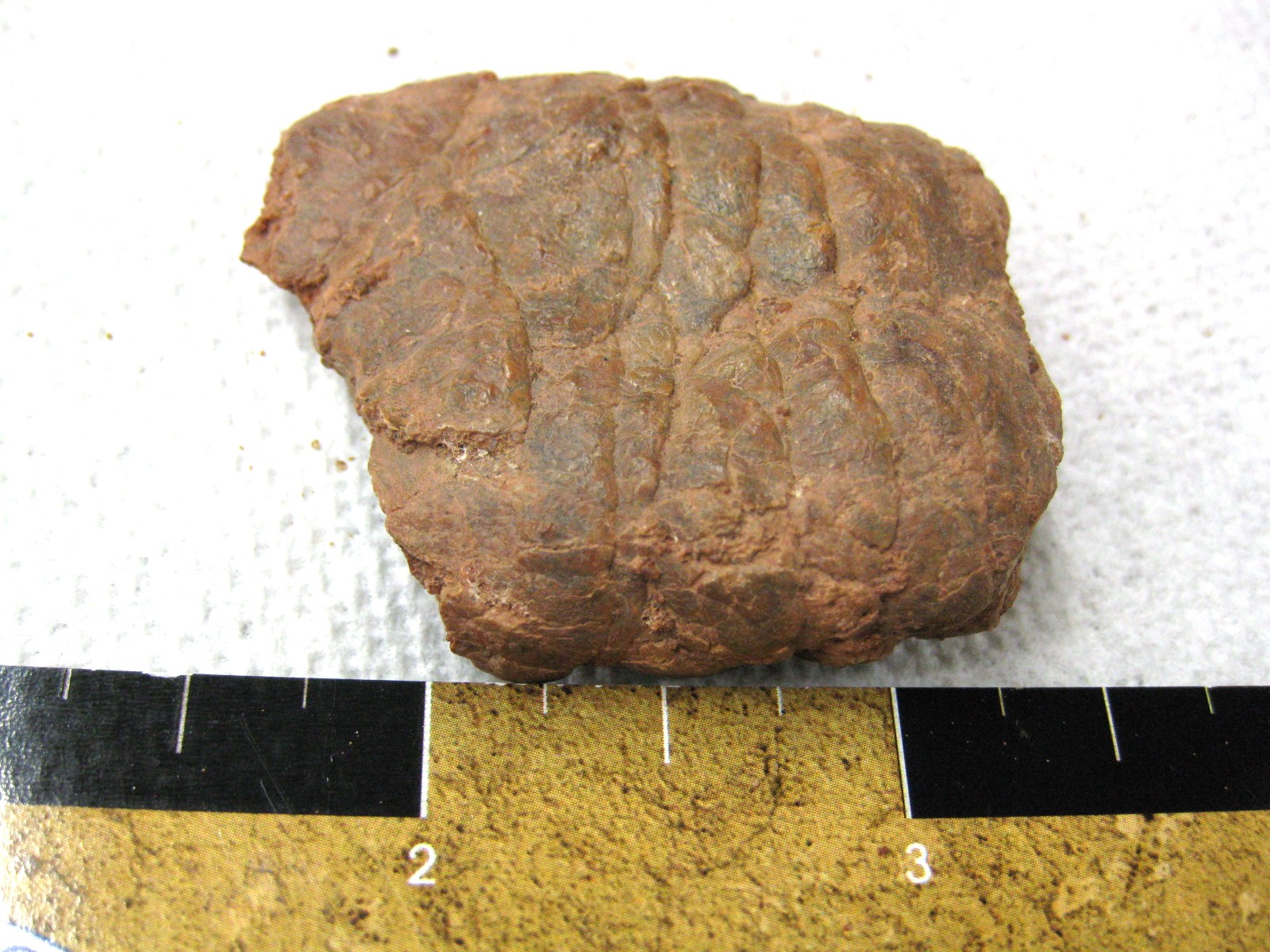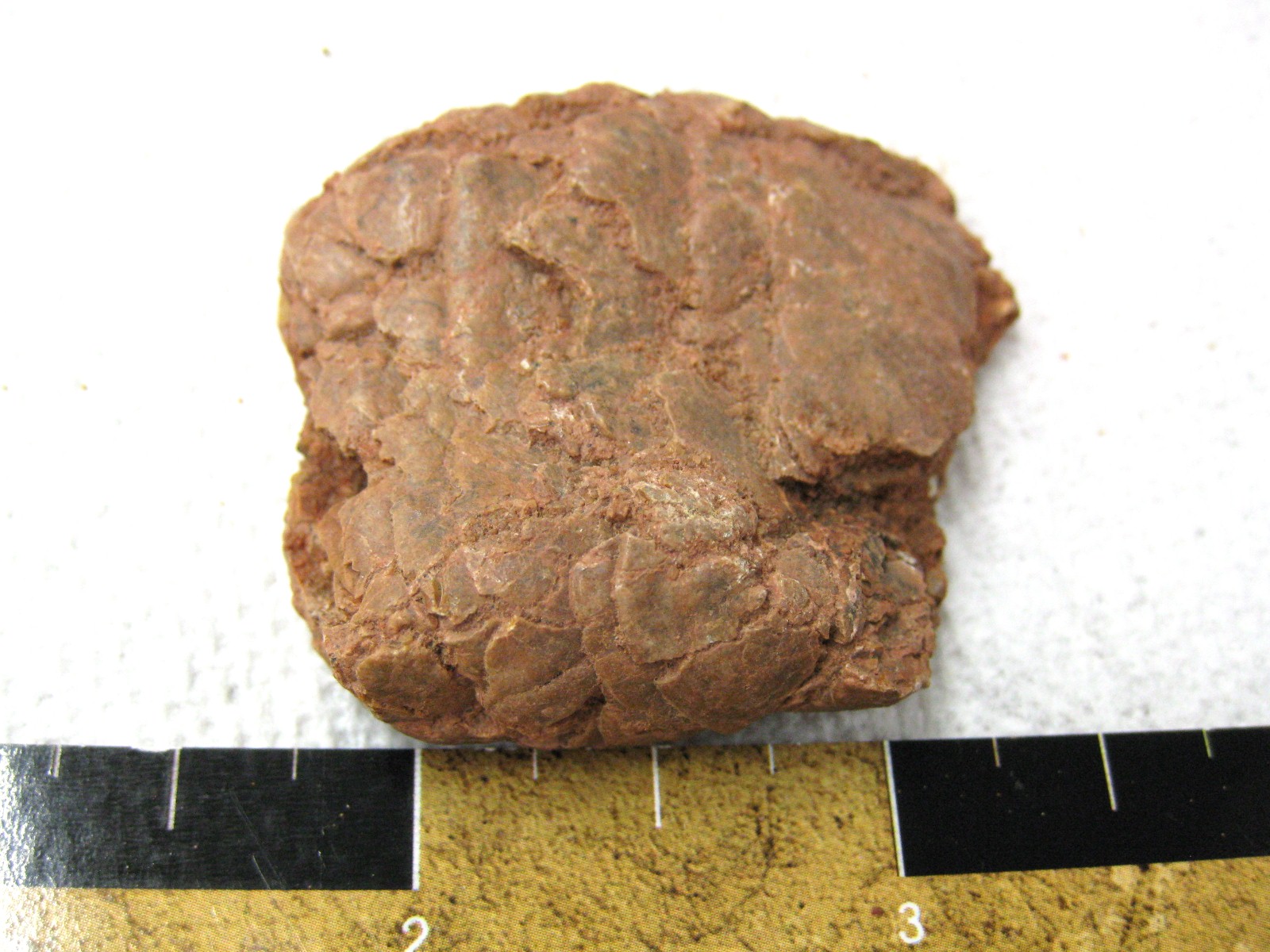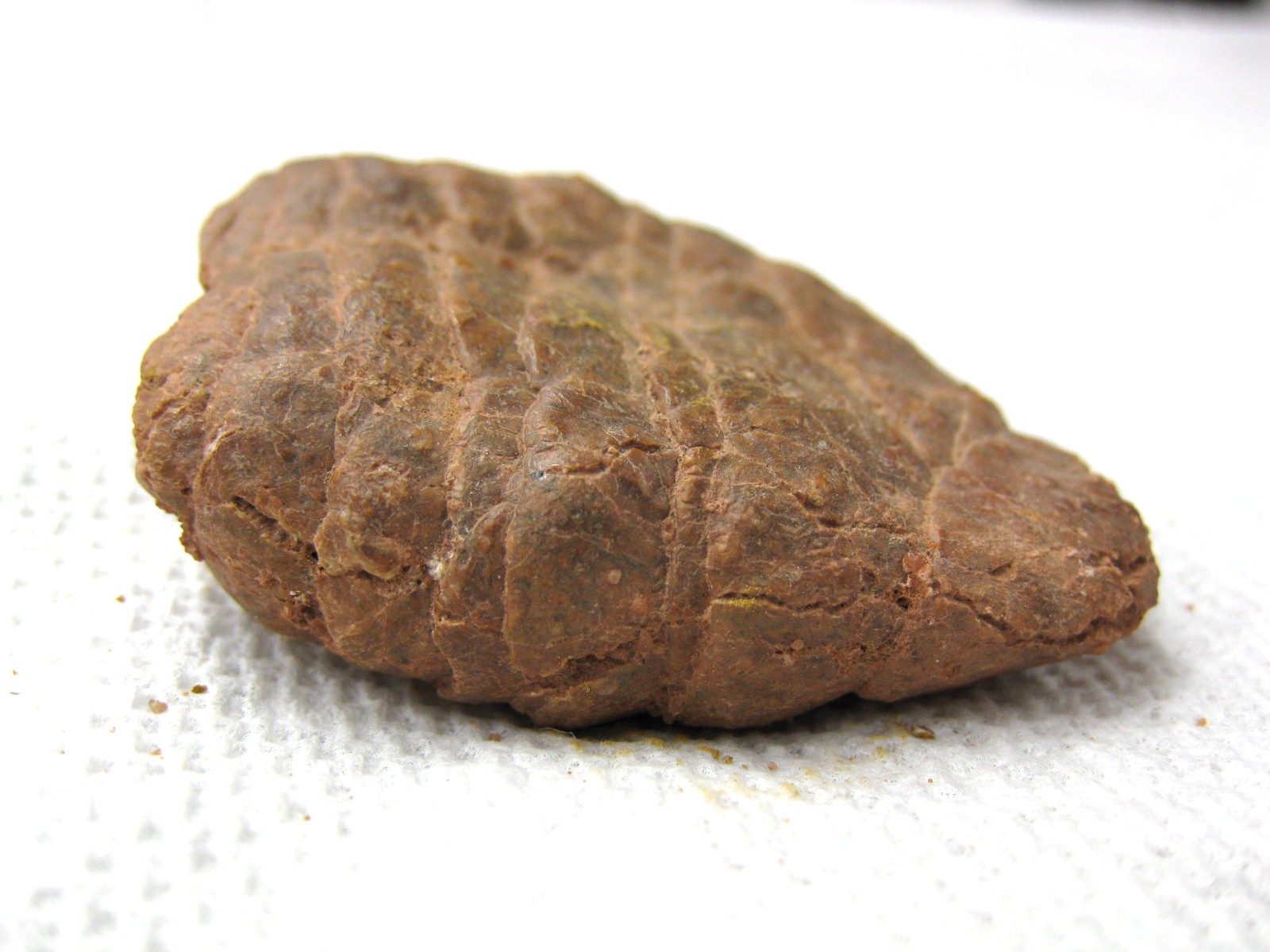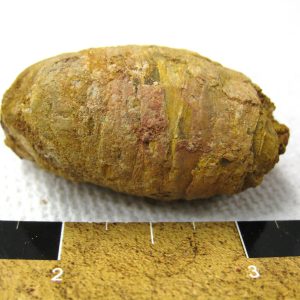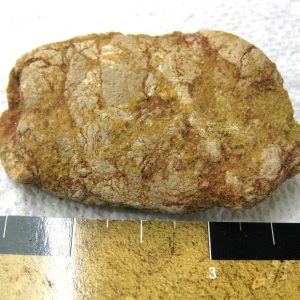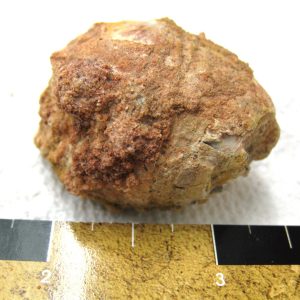Description
- Fish or Shark Coprolite (Fossil Poop)
- Cretaceous Age
- Taouz, Kem Kem Basin
- Morocco, N. Africa
- See Ruler in Pics for Size in Inches
A coprolite is fossilized feces. Coprolites are classified as trace fossils as opposed to body fossils, as they give evidence for the animal’s behaviour (in this case, diet) rather than morphology. They were first described by William Buckland in 1829. Prior to this they were known as “fossil fir cones” and “bezoar stones”. They serve a valuable purpose in paleontology because they provide direct evidence of the predation and diet of extinct organisms. Coprolites may range in size from a few millimetres to over 60 centimetres. Like other fossils, coprolites have had much of their original composition replaced by mineral deposits such as silicates and calcium carbonates.

